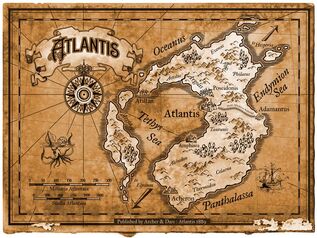
When the Greek philosopher Plato wrote Timaeus and Critias, an allegory on the hubris of nations, he set up many future generations for wasting a lot time.
Atlantis, the fictional island mentioned in the allegory, represents a hostile naval power that besieges "Ancient Athens", the pseudo-historic embodiment of Plato's ideal state in The Republic. In the story, Athens defeats the attack unlike any other nation of the known world, supposedly bearing witness to the superiority of Plato's concept of a nation state. The story concludes with Atlantis falling out of favor with the deities and submerging into the Atlantic Ocean, leaving the world plagued with another mystery.
For the last 2,300 years people have been searching for the ruins of the lost city of Atlantis. Seems like a lot of time ill spent when there are real cities and ruins underwater throughout the world, some of which have only been recently discovered, and some which pre-date Plato himself.
DISCOVERING UNDERWATER CITIES AND RUINS
The thought of discovering underwater ruins and treasures sparks the imagination of the history or adventure enthusiasts like nothing else. Underwater discoveries, ranging from sunken cities to the millions of shipwrecks still unexplored on the seabed, are still being found. The bottom of the seas and oceans of the world have been described as the biggest museum of the world, with less than 1% of the ocean floor having been surveyed to date.
In fact many important discoveries were made in the last century, presumably because the kind of diving and scientific equipment became available for that kind of underwater exploration and excavation. Let’s look at some of oldest of the ruins.
● Atlit-Yam, Haifa, Israel (9000 years old)
Perhaps the oldest city discovered in an underwater grave is Atlit-Yam, Israel. The submerged ruins of the Neolithic site, which dates between 6900 and 6300 BC, lies around 30 to 40 feet beneath the current sea level and covers an area of 10 acres. The site is located in the Haifa region of Israel, in the Mediterranean Sea, in the Bay of Atlit, at the mouth of the Oren River on the Carmel coast.
| Image Credit: freeworldmaps.net/europe/mediterranean Image source: researchgate.net/figure/MapMediterranean |  Image Source:guideoftheworld.com/israel |
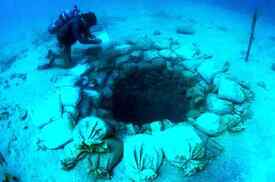
◄ Image source: lexiline.blogspot.com/atlit-yam-israel
| Stone Circle ▲ and Planisphere by Andia Kaulins (2008) ► Source of Images: blogs.timesofisrael.com/atlit-yam |
The ritual megaliths consist of seven stones (approximately three to eight and a half feet long), six of which are still standing upright, form a circle open to the northwest. The bases of the standing stones are covered with gray travertine attesting to the presence of fresh water in the past. Close to the standing stones to the west, a few flat stone slabs were found lying horizontally, some of them with shallow cup-marks. Some scientists conclude the monoliths are laid out as a planisphere of the heavens.

Among the intact tombs, archaeologists discovered the inhabitants were buried in a flexed position on their sides or backs, sometimes in group graves. The discovery of two skeletons, a woman and a child, of particular interest to scientists, revealed the earliest known cases of tuberculosis.
Image credit:. Wikimedia CC BY-SA 3.0
Image Source: blogs.timesofisrael.com/atlit-yam
Researchers found piles of fish ready for trade or storage, leading them to conclude that the village was abandoned suddenly. According to Wikipedia, “An Italian study….indicates that a volcanic collapse of the eastern flank of Mount Etna 8,500 years ago would likely have caused a 10-storey (130 ft) tsunami to engulf some Mediterranean coastal cities within hours. Some scientists point to the apparent abandonment of Atlit Yam around the same time as further evidence that such a tsunami did indeed occur.”
● Yonaguni Ruins, Japan (10,000 to 5,000 years old)
The Island of Yonaguni is just miles away from Taiwan and is the last of the Ryukyu islands. It is the westernmost inhabited Japanese island. During the ice age, Yonaguni Island was part of the Chinese mainland. Then due to rising oceans and land shifts, it became one of the many islands that were spread out in between China and Japan. It was once part of the Ryukyu Kingdom until it was overtaken by Japan.
| ▲ImageSource: periergaa.blogspot.com/2014/09/yonaguni.html Image Source: joshuaproject.net/people_groups/ ► |
There was, and may still be, controversy regarding whether or not these ruins are actually manmade. "The largest structure looks like a complicated, monolithic, stepped pyramid that rises from a depth of 25 meters [82 feet]," said Masaaki Kimura, a marine geologist at the University of the Ryukyus in Japan who has been diving at the site to measure and map its formations for more than 15 years.
▼ Image Source: herbeauty.co/en/mysteries-deep/
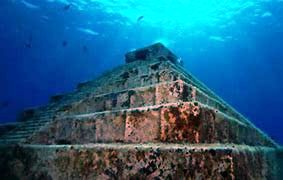
However, Toru Ouchi, an associate professor of seismology at Kobe University, supports Kimura's hypothesis, and says “I've dived there as well and touched the pyramid… What Professor Kimura says is not exaggerated at all. It's easy to tell that those relics were not caused by earthquakes."
Regardless of their validity, the ruins have been submerged for at least two thousand years, perhaps much longer, meaning whatever was once there, would be extremely degraded.
● Dwarka, India (7000 and 9500 years old)
Dwarka is one of the best-studied underwater sites because it is one of the four Dhamas (sacred place for pilgrimage) of the Hindu religion. According to ancient Sanskrit literature, the Lord Krishna founded the holy city of Dwarka, which subsequently was submerged under the sea. Dwarka has been the Karma land of Lord Krishna, the 8th avatar of Lord Vishnu. He was born in Mathura but moved to Dwarka after killing his uncle Kansa because of the many atrocities he committed.
The location of the mythical city of Lord Krishna was thought to be a legend, such as Atlantis, until a marine scientist discovered the remains of an underwater civilization near the coast of Dwarka, in the 1970s. Since then the city has been intensely studied. Experts believe that a tsunami stuck 3500 years ago, causing numerous cities, including Dwarka, to submerge.
In 2002, an ancient advanced civilization was discovered not far away, under 120 feet underwater in the Gulf of Cambhat off the western coast of India. The old city is almost five miles long by two and a quarter miles wide. Carbon testing indicates the ruins are between 7000 and 9500 years old.
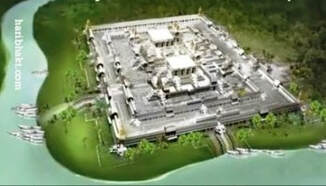
| Source of Images: ▲ ► traveltriangle.com/lost-cities-in-india/ Image Source: earthismysterious.com/dwarka-mythical-city far right► |
● Pavlopetri, Greece
Identified originally by geologist Folkion Negris, in 1904, as the Bronze Age port of Pavlopetri, these Greek ruins remained unstudied until 1960 when it was rediscovered by Nic Flemming, from the Institute of Oceanography at the University of Southampton.
In 1968, the site was surveyed by archaeologists from the University of Cambridge. Then in 2009, under the direction of John C. Henderson, the University of Nottingham began a five-year project with the Ephorate of Underwater Antiquities of the Hellenic Ministry of Culture and Tourism and the Hellenic Centre for Marine Research to study the town at Pavlopetri.
This underwater archaeological site is located in the Peloponnesus region of southern Greece near a small village called Pavlopetri. The archaeological ruins lie 4 meters (thirteen and a half feet) underwater. We can refer to the same location map of the Mediterranean as we did for Atlit-Yam.
However, this is not the lost Atlantis. The remains found predate Plato’s story. References say it is now believed to be the oldest known planned underwater town in the world, even though Atlit-Yam is the claimed to be 9000 years old. I have no idea how scientists decide because the dating process only gives a age range. Just sayin.
Source of images: secret-greece.com/pavlopetri/
▼Source of Images: medium.com/@humanoriginproject/underwater-ruins ▼
| Image Source: lolwot.com/submerged-ruins | 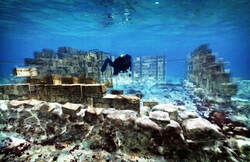 Image source: secret-greece.com/pavlopetri-city-beneath-the-waves/ | Image Source: lolwot.com/submerged-ruins |
Dr. Jon Henderson, from the University of Nottingham team, manager of the Pavlopetri Underwater Archaeology Project, says, “Pavlopetri was incredibly well designed with roads, two storey houses with gardens, temples, a cemetery, and a complex water management system including channels and water pipes. In the center of the city, there was even a square or plaza measuring about 40 by 20 meters (131 x 65 ft) and most of the buildings had up to 12 rooms inside. “There are older sunken sites in the world but none can be considered to be planned towns such as this, which is why it is unique.”
● Heracleion and Canopus
Thonis-Heracleion (also spelled Herakleion and called Pe-Guti by the Egyptians) were Egyptian cities located on the north coast of the Mediterranean sea near the western-most branch of the Nile River, about 32 miles from Alexandria.
Image Source: historyplex.com/ancient-egypt
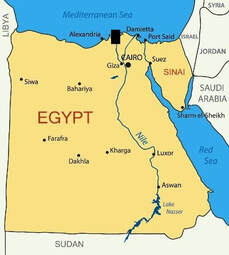
Nearby, the city of Canopus housed the shrine to Serapus, and the City was a significant religious center during the Ptolemaic rule. Pilgrims thronged to the site seeking miraculous healing.
By the second century BC, Heracleion was superseded by Alexandria as Egypt’s main port. According to Wikipedia, “Over time the city was weakened by a combination of earthquakes, tsunamis, and rising sea levels. After the end of the second century BC, probably after a severe flood, the ground on which the central island of Heracleion was built succumbed to soil liquefaction. The hard clay turned rapidly into a liquid and the buildings collapsed into the water. A few residents stayed on during the Roman era and the beginning of Arab rule, but by the end of the eighth century AD what was left of Thonis had sunk beneath the sea.” https://en.wikipedia.org/wiki/Heracleion
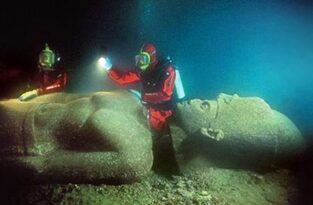
ImageSource: herbeauty.co/mysteries-deep/ Source Images: egymonuments.gov.eg/sunken-monuments/

Example of soil liquefaction – Nigerian Earthquake, 1964
Image source:image1.slideserve.com/2053130/slide2-l.jpg
TAKE AWAY
The three sunken cities located on the shores of the Mediterranean Sea were affected by geologic occurrences over the millennia in that area of the world. Some of the disasters might have been caused by the same events, although none of the research I saw included a time line comparing the inundations.
There are quite a few other sunken cities in surprising places, and many in lakes. Most of those are not as old, with a few exceptions, and fodder for another blog. Lakes are more vulnerable to changing water levels and local geological events.
The raising of the water level of the oceans can make a big difference. Hopefully, our modern cities on the shores of oceans, seas, and lakes are engineered to account for what humans know about natural disasters, water, and structural design.
Finally, I found it interesting and puzzling that whole cities, some of which were prominent in the past, were so easily forgotten and so difficult to find, particularly when most of them are not really that far underwater.
JUST SAYIN!
Sources:
.https://www.thetravel.com/underwater-cities-that-look-straight-out-of-aquaman/
https://medium.com/@humanoriginproject/8-mysterious-underwater-ruins-of-lost-civilizations-8f83aee6b117
http://descy.50megs.com/Emankato/under.html
https://www.rainforestcruises.com/guides/lake-titicaca-puno-attractions
https://medium.com/@humanoriginproject/8-mysterious-underwater-ruins-of-lost-civilizations-8f83aee6b117
https://www.addtobucketlist.com/these-7-underwater-cities-are-open-to-all/
https://www.lolwot.com/10-truly-incredible-submerged-ruins-to-explore/
https://kalkanholidayproperty.com/the-sunken-city-of-kekova/
https://listverse.com/2013/03/28/10-incredible-submerged-ruins/
https://www.addtobucketlist.com/most-amazing-underwater-sights/
https://www.crystalinks.com/laketiticacaruins.html
https://en.wikipedia.org/wiki/Tiwanaku
https://en.wikipedia.org/wiki/Lake_Titicaca
https://www.reuters.com/article/us-guatemala-archaeology-idUSTRE59T4P120091030
https://archaeologynewsnetwork.blogspot.com/2011/11/guatemala-reveals-treasures-from.html
https://www.marineinsight.com/maritime-history/top-10-amazing-facts-about-the-lost-city-of-atlantis/
https://mwwollacott.com/what-did-plato-say-about-atlantis/
https://www.jdsupra.com/legalnews/sinking-cities-not-just-at-sea-level-60014/
https://www.ancientpages.com/2019/08/13/10-enigmatic-ancient-underwater-ruins-our-oceans-are-full-of-secrets/
https://www.earthismysterious.com/underwater-ruins-of-lost-Cities/#:~:text=Here%20are%2014%20underwater%20ruins%20of%20lost%20civilizations,spot%20for%20the%20wealthy%20and%20prestigious%20of%20Rome.
https://www.earthismysterious.com/underwater-ruins-of-lost-Cities/#:~:text=Here%20are%2014%20underwater%20ruins%20of%20lost%20civilizations,spot%20for%20the%20wealthy%2and%20prestigious%20of%20Rome.https://www.bing.com/images/search?view=detailV2&ccid=Jo0noGWC&id=074AA5EA23ED7234CA0B8502847272CD000B9ECD&thid=OIP.Jo0noGWCFXnwK4lfPJwOSAHaEK&mediaurl=https%3a%2f%2fi.ytimg.com%2fvi%2ffDwkdyG-HPE%2fmaxresdefault.jpg&cdnurl=https%3a%2f%2fth.bing.com%2fth%2
Yonaguni ,Japan
https://www.nationalgeographic.com/history/article/yonaguni-jima-japan-underwater-city#:~:text=Ruins%20Point%20Yonaguni%20Jima%20is%20an%20island%20that,was%20unofficially%20renamed%20Iseki%20Hanto%2C%20or%20Ruins%20Point.
https://joshuaproject.net/people_groups/16052/JA (Map)
https://jpninfo.com/65889
https://www.weirdasianews.com/2008/04/13/japans-underwater-pyramid/#:~:text=Underwater%20rock%20formations%20resembling%20a%20pyramid%20found%20off,at%20the%20University%20of%20the%20Ryukyus%20in%20Japan.
Dwarka, India
https://www.earthismysterious.com/dwarka-mythical-city-found-under-water/#:~:text=According%20to%20ancient%20Sanskrit%20literature%2C%20the%20Lord%20Krishna,%28sacred%20place%20for%20pilgrimage%29%20of%20the%20Hindu%20religion.
https://tabooya.com/blog/2015/03/30/these-mindblowing-underwater-cities-have-scientists-reconsidering-the-bibles-big-flood/
https://www.gujaratexpert.com/dwarka-history/#:~:text=Dwarka%20is%20one%20of%20the%20most%20significant%20Hindu,Puris%E2%80%99%3B%20i.e.%207%20holy%20pilgrimage%20spots%20for%20Hindus.
https://www.themysteriousindia.net/dwarka-mythical-city-found-under-water/
https://www.ba-bamail.com/content.aspx?emailid=34323
https://valorealm.com/spirituality/dwarka-underwater-history-discovery/
https://rafalreyzer.com/the-underwater-ruins-of-dwarka/ (also location map)
https://traveltriangle.com/blog/lost-cities-in-india/
https://www.ba-bamail.com/content.aspx?emailid=34323
Pavlopetri, Greece
https://theglobalgrid.org/video-of-submerged-port-city-in-pavlopetri-greece/
http://www.pavlopetri.org/2014/12/mmmmmmmmmm.html
https://www.reddit.com/r/ArtefactPorn/comments/25qrxp/ruins_of_ancient_city_of_pavlopetri_laconia/
https://www.secret-greece.com/pavlopetri-city-beneath-the-waves/
https://www.nexusnewsfeed.com/article/ancient-origins/pavlopetri-5-000-year-old-town-discovered-underwater-in-greece/
Atlit Yam – Haifa, Israel
https://www.atlasobscura.com/places/atlit-yam
https://www.elitereaders.com/top-10-mind-blowing-underwater-discoveries/
https://israelbehindthenews.com/2014/10/13/israels-challenges-eastern-mediterranean/ (Map 1)
https://www.quora.com/Does-Britain-have-the-military-capability-to-invade-Turkey (map 2)
https://blogs.timesofisrael.com/atlit-yam-a-journey-into-israels-sunken-past/
https://www.gd.tt/docubox-tv-mystery-of-atlit-yam/
https://lexiline.blogspot.com/2008/12/atlit-yam-israel-underwater-megaliths.html
https://en.wikipedia.org/wiki/Atlit_Yam
https://www.guideoftheworld.com/israel-map.html
Herakleion and Canopus, Egypt
https://herbeauty.co/en/foodtravel/mysteries-deep/
https://www.lolwot.com/10-truly-incredible-submerged-ruins-to-explore/
https://www.slam.org/press/sunken-cities-backgrounder-thonis-heracleion-and-canopus/
https://historyplex.com/ancient-egypt-facts-for-kids
https://antinousgaygod.blogspot.com/2
https://en.wikipedia.org/wiki/Heracleion
https://www.elmundo.es/la-aventura-de-la-historia/2016/06/01/574daab446163f31358b459c.html014/08/in-egypt-antinous-and-hadrian-visited.html
https://www.slam.org/press/sunken-cities-backgrounder-thonis-heracleion-and-canopus/#:~:text=Experts%20believe%20soil%20liquefaction%20and%20a%20gradual%20rise,the%20cities%20were%20unknown%20until%20Goddio%E2%80%99s%20discoveries.%20Thonis-Heracleion
https://egymonuments.gov.eg/en/sunken-monuments/abu-qir-bay/#:~:text=Canopus%20and%20Herakleion%20were%20extremely%20prosperous%2C%20deriving%20their,Soter%20%28305%E2%80%93285%20BC%29%20after%20the%20death%20of%20Alexander.
■
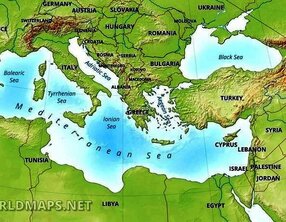
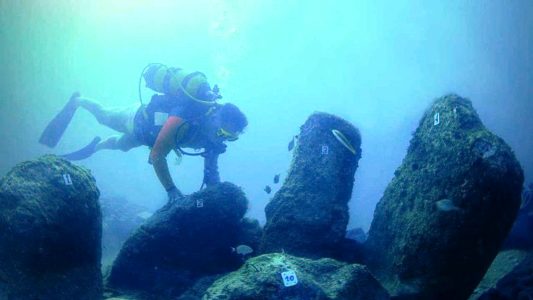
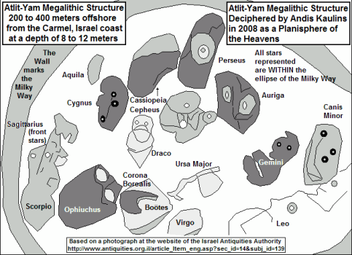
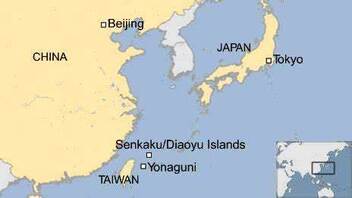
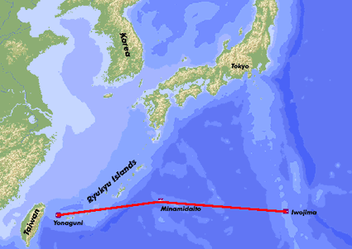
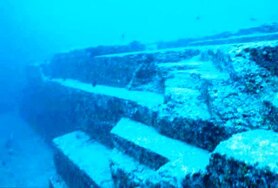
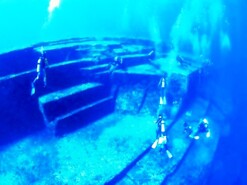
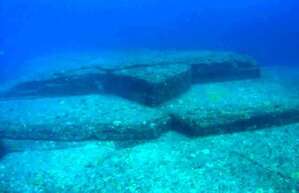
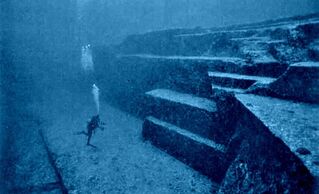

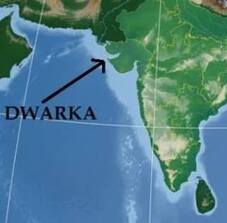
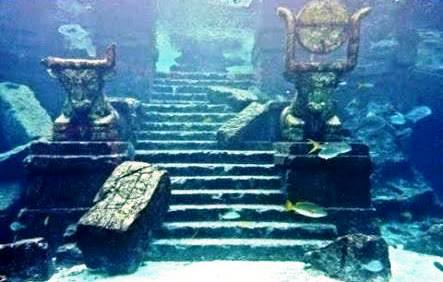
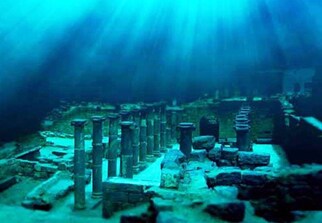
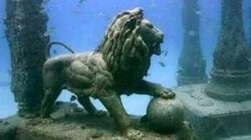
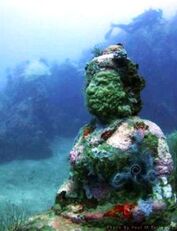
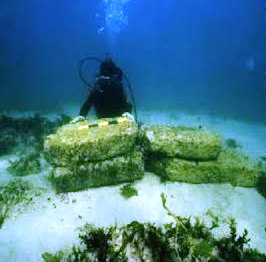
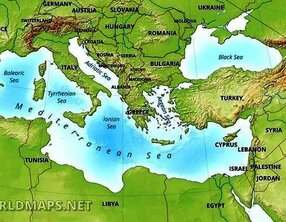
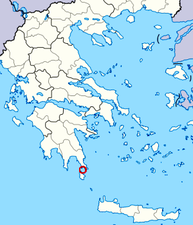
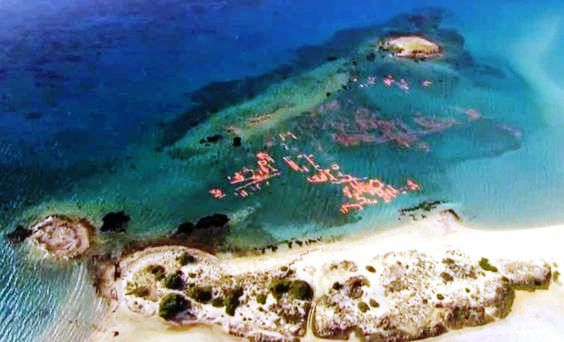
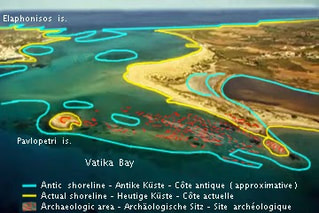
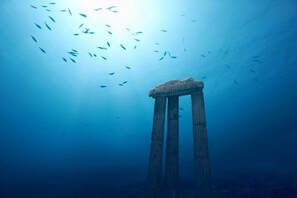

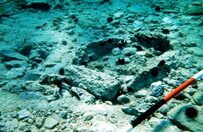
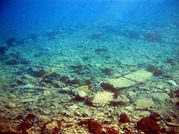
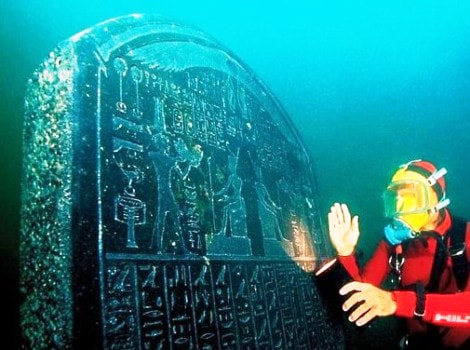
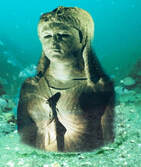
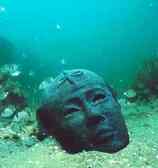
 RSS Feed
RSS Feed